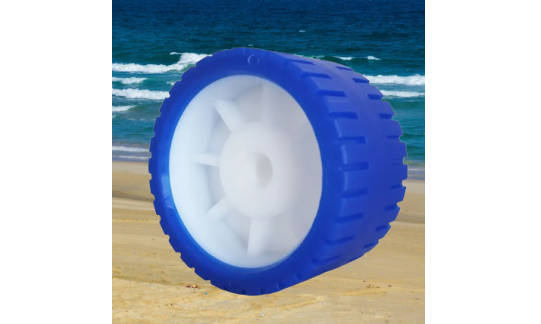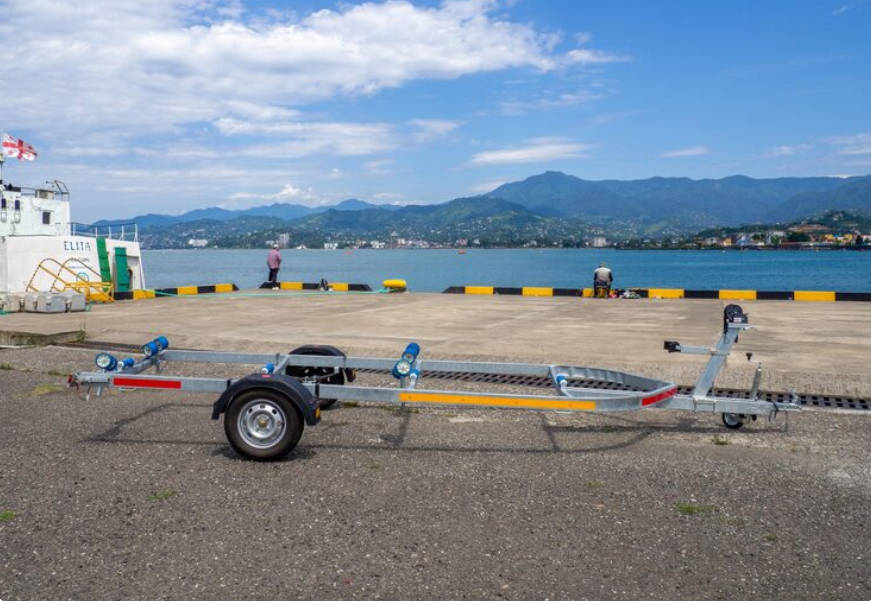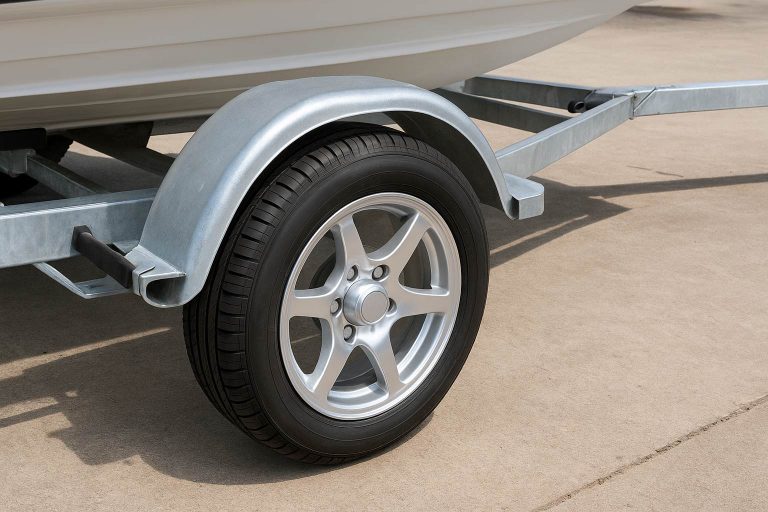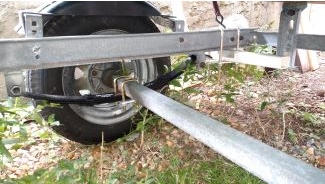The maintenance of your boat trailer rollers is the secret to trouble-free launching, preservation of your boat’s hull, and trailer parts longevity. Remolque knows how valuable your investment is and goes that extra step to ensure that, from materials to design, our rollers are built tough and durable enough so that they can last for years to be at your service. Here in this article, we provide practical tips and advice on how to maintain boat trailer rollers in good condition.
The Importance of Roller Maintenance
Boat trailer rollers support your boat while it is being loaded, unloaded, or towed. Worn or defective rollers will exert unequal pressure, resulting in dents, scratches, or even structural damage—particularly on fiberglass hulls. Smooth working rollers enable boat recovery and launching in a snap, with your investment safeguarded. Neglecting roller maintenance will also cost you unnecessarily. Replaced worn rollers or repaired damaged hulls cost considerably more than regular cleaning, inspection, and lubricating. Proper maintenance extends roller life and makes your boating experience safer.
Typical Roller Issues and Their Impact
Familiarity with common roller issues ensures you detect problems early:
- Cracks or flat spots: Typically due to long-term storage under load or excessive friction.
- Corrosion or rust: Metal components exposed to saltwater or water can become weakened over time.
- Stiff or creaky rotation: Indicates inadequate lubrication or rusting of the spindle internally.
- Misaligned brackets: Unbalanced pressure on the hull, which can cause eventual damage.
Catch these problems early and save money by keeping your trailer in pristine working condition.
Cleaning and Inspecting Your Rollers
How Often Should Trailer Rollers Be Cleaned
Clean every few uses—if you’ve used them for saltwater applications. Salt deposit encourages corrosion not only on metal pieces but also weakens rubber with time. Clean loose dirt using clean water and mild soap to sweep debris from the roller surface and brackets. Do not use harsh chemicals, which will compromise material integrity.
What to Look For When Inspecting
Under regular inspections:
- Rotate each roller by hand—watch smooth rotation with no drag.
- Inspect for flat spots or cracks.
- Looseness or rust inspection of mounting brackets.
- Bolts and fasteners, tight but not over-tightened.
These easy steps are able to identify any issue early enough before it becomes expensive repairs.

Signs It’s Time to Replace
When you notice any of the following on inspection:
- Squealing or grinding sounds are relentless.
- Deformation (i.e., flat spots).
- Roller face cracks.
- Will not turn manually, even with lubrication.
Time to replace it. Purchase your trailer parts online, where you will find heavy-duty replacements at our products page, designed for use in saltwater conditions.
Lubrication and Maintenance of Moving Components
The Correct Lubricants for Trailer Rollers
Utilize marine-grade lubricants that are formulated for high-moisture conditions. They will withstand water washout exposure and prevent rusting of sliding joints. Never use general-purpose greases that will degrade instantly in contact with water.
How to Properly Use Lubrication
Apply lubricant to roller spindles immediately after they are cleaned. Hand-turn rollers several turns to distribute the lubricant uniformly on areas of contact. Remove excess grease, which will retain dirt or sand particles in the long run. Apply lubricant to pivot points with the aid of brackets with movable joints (such as swivel arms).
Preventing Rust and Corrosion
Corrosion is the biggest enemy of metal components found in the vicinity of bodies of water. To prevent rusting, inner and outer tubes have been galvanized. Even when purchasing replacement components from GO Trailer’s stock, choose galvanized steel mounts since they are stronger against corrosion than plain metals.
Storage Tips for Longer Roller Life
Storing Your Trailer Off-Season
When unused during off-season months:
- Jack up your trailer using jack stands.
- Remove the rollers of weight.
- Under cover, if possible—or in indoor storage.
This avoids unnecessary wear on rubber/nylon surfaces in the long term. The jockey wheel also comes in useful when parking a caravan or trailer for a long time.
Protection from Sun and Moisture Damage
UV light dries out rubber products such as rollers ahead, leading to cracks or becoming brittle. Apply UV-blocking sprays when outside storage is open. Supply drainage in the area around the storage space to avoid puddling under trailers that may create conditions for rust to build up under brackets.
Using Covers or Shelters
Trailer covers not just complete work but also keep wheels and rollers’ lives current by not allowing them to be exposed to rain and the sun. Purchase breathable waterproof covers that let out water vapour but not rain for complete protection.
Select The Right GO Trailer Rollers
Not every trailer or boat needs the same kind of roller. GO Trailer offers several varieties suitable rollers for various types of vessels and situations:
- Heavy-duty rollers: For large boats with higher weights.
- Light-duty rollers: For small craft such as jet skis.
- Materials: Heavy-duty resistant nylon or heavy-duty rubber that resists cracking, UV, and saltwater corrosion.
If you’re not sure which roller will fit your arrangement, our service staff may assist in installing the correct product by boat size, trailer type, and water setting (freshwater or saltwater).

Regular Issues and Solutions
Flat-Spotted Rollers
Cause: Idle trailers when loaded.
Solution: Replace spoiled rollers and lift the trailer off the floor for storage to avoid repetition.
Misaligned Brackets
Cause: Uneven pressure on the hull.
Solution: Loosen bracket bolts slightly, re-align along the keel line, and re-tighten in small steps with a torque wrench.
Noisy or Stiff Rollers
Cause: Internal rust or lack of lubrication.
Solution: Replace if continuous, rotate manually, lube with marine-grade grease, and clean extensively.
GO Trailer also offers adjustable brackets and specialty jacks for load balancing and alignment while in storage or maintenance.

Conclusion: Protect Your Investment With GO Trailer
Periodic maintenance is the secret to maintaining your boat trailer rollers in as-good-as-new condition. Cleaning, inspection, lubrication, and storing your rollers in proper conditions will keep you free from damage, save on replacement expense, and make launches hassle-free every time.
Buy online with us to obtain quality, CE-approved rollers and other spares for freshwater and saltwater applications. GO Trailer offers durable products with the advantage of expert advice.
FAQ
Q: How do I know which roller would be best suited to my particular boat?
A: Contact us directly at admin@gotrailerpart.com. We can match one to you by boat size/type/materials of your current setup.
Q: Can custom-sized rollers be supplied?
A: Yes! The package and the size can be tailored to fit customer specifications, including dimensions aimed for specially variable boats/trailers setups.
Q: Are replacement parts CE certified?
A: We have a CE certificate for trailer spares. This certifies European standards of safety for peace-of-mind in the aspect of durability & reliability for every market, including EU/Australia/USA markets.






